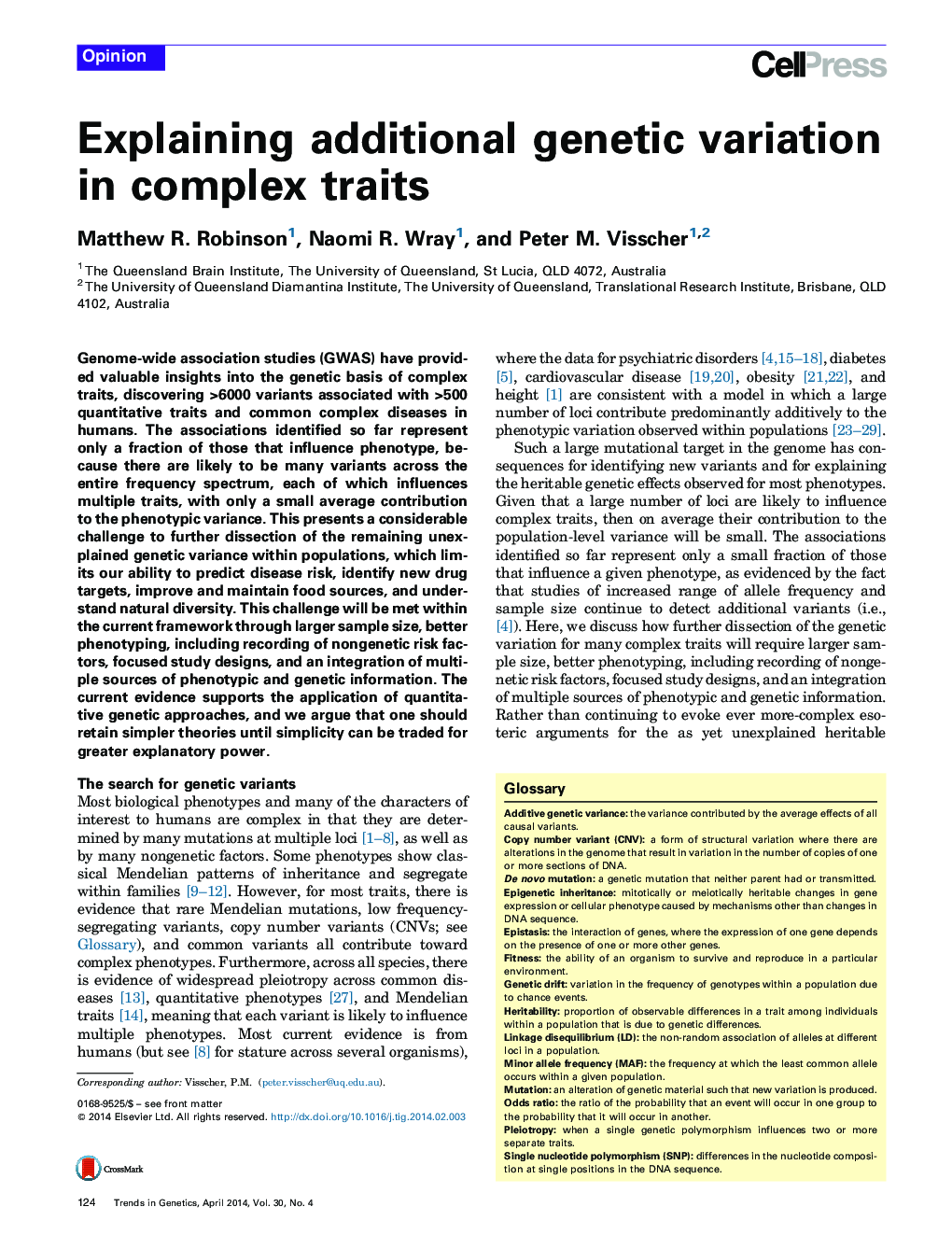| کد مقاله | کد نشریه | سال انتشار | مقاله انگلیسی | نسخه تمام متن |
|---|---|---|---|---|
| 2824769 | 1161859 | 2014 | 9 صفحه PDF | دانلود رایگان |
• Quantitative traits and complex diseases are influenced by many causal variants throughout the genome and across the allele frequency spectrum.
• This likely large mutational target presents a challenge for identifying all of the variants involved.
• Dissecting unexplained genetic variance is important for disease-risk profiling, drug development, protecting food supply, and understanding diversity.
• Larger sample size, better SNP coverage, better phenotyping, focused study designs, and an integration of multiple sources of phenotypic and genetic information will explain additional genetic variation.
• One should retain simpler theories until simplicity can be traded for greater explanatory power; evoking ever more-complex esoteric arguments for the as yet unexplained heritable effects is unnecessary.
Genome-wide association studies (GWAS) have provided valuable insights into the genetic basis of complex traits, discovering >6000 variants associated with >500 quantitative traits and common complex diseases in humans. The associations identified so far represent only a fraction of those that influence phenotype, because there are likely to be many variants across the entire frequency spectrum, each of which influences multiple traits, with only a small average contribution to the phenotypic variance. This presents a considerable challenge to further dissection of the remaining unexplained genetic variance within populations, which limits our ability to predict disease risk, identify new drug targets, improve and maintain food sources, and understand natural diversity. This challenge will be met within the current framework through larger sample size, better phenotyping, including recording of nongenetic risk factors, focused study designs, and an integration of multiple sources of phenotypic and genetic information. The current evidence supports the application of quantitative genetic approaches, and we argue that one should retain simpler theories until simplicity can be traded for greater explanatory power.
Journal: - Volume 30, Issue 4, April 2014, Pages 124–132
